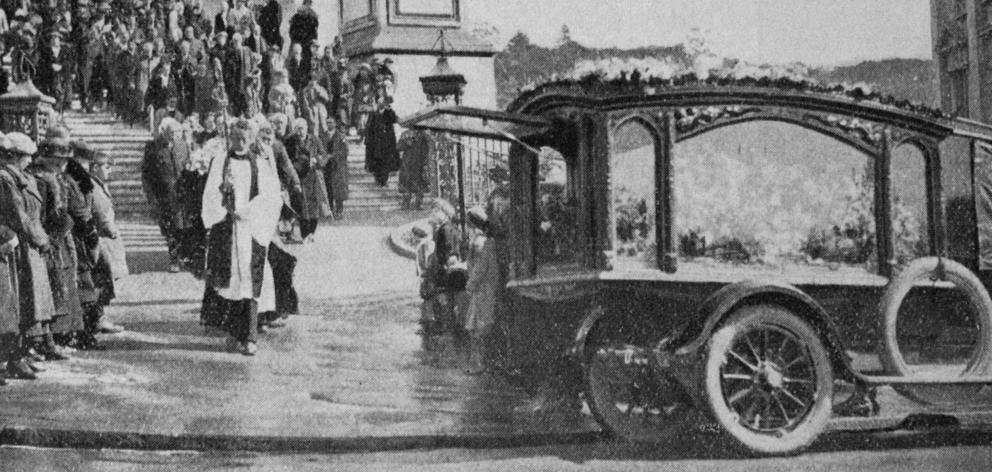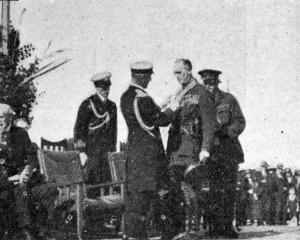
The journey to Warrington was made by nearly 100 persons, many having been deterred by the weather. Included in the parry were a large number of clergy, together with many prominent churchmen, as well as the representatives of several of the other denominations. Here, in a picturesque rural cemetery, with the sea in front and the hills rising at the back, the mortal remains of the late bishop were interred by the side of those of his first wife, which rest in a grave overhung by the branches of a noble oak tree and in close proximity to the little chapel enclosed by the cemetery grounds.
White-faced heron spotted
The blue crane (heron) is rarely seen by residents of our cities, not often indeed by those who dwell in the country, but it was the good fortune of some city visitors to Cape Saunders to see one of these rare and interesting birds on the shore of Wickliffe Bay, as they passed in their motor on returning to town. It appears that a pair of the cranes have taken up their abode in the locality for some time past, and it was a coincidence that the visitors were speaking of this interesting fact just before one of the birds rose from the shore of the bay and flew to a small island, where it landed on the beach and then again rose in the air and across the bay. A visit to Cape Saunders forms an excellent day’s outing if the weather is fine, and although portions of the drive of 22 miles from the city are over roads that are none too good, this is forgotten when the goal of the fine, well-grassed area above the lighthouse is reached, rugs and overcoats spread on the sward and all the concomitants of a good lunch quickly displayed, and the inevitable billy tea quickly made available.
Overcrowding at Seacliff
Dr Truby King, who is leaving Seacliff mental hospital after 32 years, states in his report that at the beginning of 1920 the patients numbered 1077. He adds the general health of the patients has been good and the recovery rate satisfactory, in spite of overcrowding. The fact of the increasing number of patients and staff year by year had made the original central provisions for cooking, bathing, and laundry work more and more inadequate, and no more makeshift alterations can meet the requirements. He said the central kitchen and bakery ought to be converted into bathrooms, and entirely new buildings and improved equipment ought to be provided in order to cope properly with the food and cooking needs for over 1000 persons. That the works referred to are urgent necessities had of course been fully recognised by the central authority. However, the exigencies of wartime and its aftermath did not make the existing position any more tolerable. "I know they make it almost impossible to deal adequately with the matter at the present time. All one can do is to reiterate what is needed and to point out that special provisions for tubercular patients are also overdue."
— ODT, 2.11.1921.












